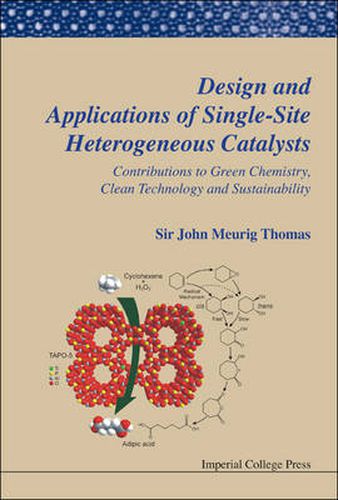Readings Newsletter
Become a Readings Member to make your shopping experience even easier.
Sign in or sign up for free!
You’re not far away from qualifying for FREE standard shipping within Australia
You’ve qualified for FREE standard shipping within Australia
The cart is loading…






For far too long chemists and industrialists have relied on the use of aggressive reagents such as nitric and sulphuric acids, permanganates and dichromates to prepare the massive quantities of both bulk and fine chemicals that are needed for the maintenance of civilised life - materials such as fuels, fabrics, foodstuffs, fertilisers and pharmaceuticals. Such aggressive reagents generate vast quantities of environmentally harmful and often toxic by-products, including the oxides of nitrogen, of metal oxides and carbon dioxide.Now, owing to recent advances made in the synthesis of nanoporous solids, it is feasible to design new solid catalysts that enable benign, mild oxidants to be used, frequently without utilising solvents, to manufacture the products that the chemical, pharmaceutical, agro- and bio-chemical industries require. These new solid agents are designated single-site heterogeneous catalysts (SSHCs). Their principal characteristics are that all the active sites present in the high-area solids are identical in their atomic environment and hence in their energy of interaction with reactants, just as in enzymes.Single-site heterogeneous catalysts now occupy a position of growing importance both academically and in their potential for commercial exploitation. This text, the only one devoted to such catalysts, dwells both on principles of design and on applications, such as the benign synthesis of nylon 6 and vitamin B3. It equips the reader with unifying insights required for future catalytic adventures in the quest for sustainability in the materials used by humankind.Anyone acquainted with the language of molecules, including undergraduates in the physical and biological sciences, as well as graduates in engineering and materials science, should be able to assimilate the principles and examples presented in this book. Inter alia, it describes how clean technology and ‘green’ processes may be carried out in an environmentally responsible manner.
$9.00 standard shipping within Australia
FREE standard shipping within Australia for orders over $100.00
Express & International shipping calculated at checkout
For far too long chemists and industrialists have relied on the use of aggressive reagents such as nitric and sulphuric acids, permanganates and dichromates to prepare the massive quantities of both bulk and fine chemicals that are needed for the maintenance of civilised life - materials such as fuels, fabrics, foodstuffs, fertilisers and pharmaceuticals. Such aggressive reagents generate vast quantities of environmentally harmful and often toxic by-products, including the oxides of nitrogen, of metal oxides and carbon dioxide.Now, owing to recent advances made in the synthesis of nanoporous solids, it is feasible to design new solid catalysts that enable benign, mild oxidants to be used, frequently without utilising solvents, to manufacture the products that the chemical, pharmaceutical, agro- and bio-chemical industries require. These new solid agents are designated single-site heterogeneous catalysts (SSHCs). Their principal characteristics are that all the active sites present in the high-area solids are identical in their atomic environment and hence in their energy of interaction with reactants, just as in enzymes.Single-site heterogeneous catalysts now occupy a position of growing importance both academically and in their potential for commercial exploitation. This text, the only one devoted to such catalysts, dwells both on principles of design and on applications, such as the benign synthesis of nylon 6 and vitamin B3. It equips the reader with unifying insights required for future catalytic adventures in the quest for sustainability in the materials used by humankind.Anyone acquainted with the language of molecules, including undergraduates in the physical and biological sciences, as well as graduates in engineering and materials science, should be able to assimilate the principles and examples presented in this book. Inter alia, it describes how clean technology and ‘green’ processes may be carried out in an environmentally responsible manner.